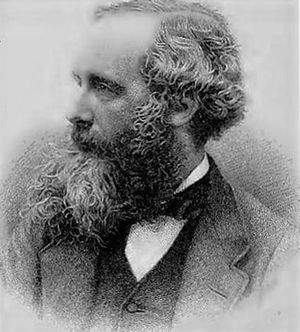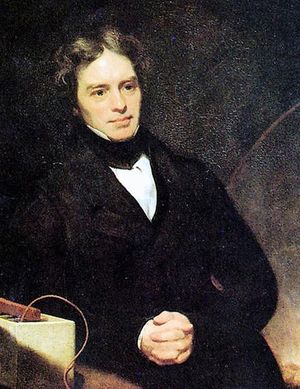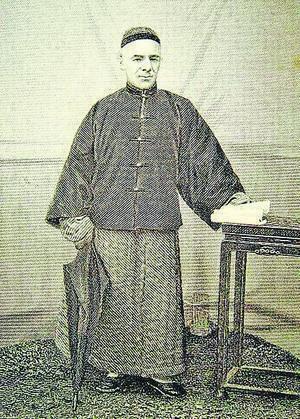To look around us and find spiritual lessons in everyday objects and events can stimulate our minds to be constantly aware of our heavenly calling. It can also provide children’s talks or serve to raise spiritual subjects with our children or grandchildren!
Alexander Cruden defined parables as ‘the illustration of spiritual things by familiar earthly objects or incidents’.
In the Old Testament the most memorable example must be the parable of the poor man and his lamb, with which Nathan rebuked David (2 Samuel 12:1-10). Another example is Jotham’s parable of the trees (Judges 9:7-20).
Parables are remarkable devices for gaining people’s attention by using everyday objects and occurrences. Satan has adapted the same principle to get people hooked on TV ‘soap-operas’ — the man-in-the-street can relate to what happens in these dramas, and this is what makes them so popular.
Master of the parable
Our Lord, of course, was the master of the parable. It was prophesied of him: ‘I will open my mouth in parables, I will utter things hidden since the creation of the world’ (Psalm 78:2).
The Thompson Reference Bible lists 29 different parables of our Lord: ‘Jesus spoke all these things to the crowd in parables; he did not say anything to them without using a parable’ (Matthew 13:34).
Jesus spoke to the woman of Samaria about drinking ‘living water’ that would give eternal life.
Having prepared her heart and mind by this parable, he finally revealed himself as Christ the Messiah.
As the crowds emerged from Sychar to hear these things for themselves, Jesus told his disciples another parable. Open your eyes, he said, and look on the fields ripe for harvest! A simple parable about water at the well led to the salvation of a multitude.
John Bunyan
A sustained parable-like narrative is known as an allegory. The most famous is probably Bunyan’s Pilgrim’s progress, first published in February 1678.
It describes the journey of Christian from the City of Destruction to the Celestial City. Bunyan himself calls it an allegory in his Apology for his book:
And thus it was: I, writing the way
And race of saints in this our gospel-day,
Fell suddenly into an allegory
About their journey, and the way to glory,
In more than twenty things, which I set down.
Bunyan’s The holy war is a further magnificent allegory, recounting the conquest of the ‘city of Mansoul’ by Satan and its deliverance by Christ.
John Flavel
Nine years before John Bunyan published Pilgrim’s progress, his contemporary, John Flavel, had published Husbandry spiritualised; or the heavenly use of earthly things — printed by Robert Boulter, London, in 1669.
This work consisted of 26 chapters on agricultural topics such as ‘Upon the winnowing of corn’, and ‘Upon the seeking of lost cattle’, each ending with a poem.
The book concluded with ‘Occasional meditations upon birds, beasts, trees, flowers, rivers and other objects’. These include ‘Upon the pulling up of a leek’, and ‘Upon the strange means of preserving the life of vegetables’.
Two years later Flavel published Navigation spiritualised, or, A new compass for seamen (he ministered mainly in Dartmouth, a seaport). In the ‘Concluding speech’ of this book, he pleads with God that this ‘lawful means’ (i.e. allegory) might reach men’s hearts and ‘bring home many lost souls to thee’.
It would be interesting to discover whether Bunyan had read Flavel’s allegories before writing Pilgrim’s progress — though the latter is quite different, being a single narrative rather than a collection of topics.
George Whitefield (1714-1770) refers to Flavel’s Husbandry spiritualised in one of his sermons:
‘Mr. Flavel, in his book called, Husbandry spiritualised, compares young Christians to green corn; which before it is ripe, shoots up very high, but there is little solidity in it: whereas, an old Christian is like ripe corn; it doth not lift up its head so much, but then it is more weighty, and fit to be cut down, and put into the farmer’s barn.
‘Young Christians are also like little rivulets … [which] are shallow, yet make great noise; but an old Christian, he makes not much noise, he goes on sweetly, like a deep river sliding into the ocean.’
William Williams
Hymn writer William Williams of Pantycelyn (1717-91) privately published a long allegorical poem in Welsh, which translates as The life and death of Theomemphus, from his birth to the grave (Theomemphus means ‘God-seeker’).
Owen Milton writes: ‘[Theomemphus] is portrayed as being present at Noah’s drunkenness, he is there in Sodom, at the worship of Baal and Molech at Belshazzar’s feast.
‘He is one of Herod’s men sent out on the trail of slaughter of the infants. He wove the crown of thorns, fashioned the cross, and struck home the nails. Under the preaching of one Boanerges he is convicted.
‘After this he hears various other preachers … Sedeucus with his easy smooth, flattering tongue; Orthocephalus with his dry, arid, orthodoxy; Schematicus, condemnatory of all but himself; Arbitrius Liber with his sermons of justification by works; and at last the one he has been searching for — Evangelius.
‘We follow Theomemphus through backsliding and recovery, through temptations and doubts until he arrives safely in heaven.’
This clearly has echoes of Pilgrim’s progress, and serves to warn us of the dangers of worldly sins and the need for watchfulness and practical holiness.
These days, however, few people relax by reading long poems. It is easier to press a button and watch images.
That is why the parable as a word-picture is as valuable a tool — as it has ever been — to open people’s minds to gospel truths.
Charles Haddon Spurgeon
Spurgeon almost invariably used contemporary illustrations in his sermons. ‘A sermon without illustrations is like a room without windows’, he commented.
A year before his death he published in 1891 Sermons in candles — ‘two lectures upon the illustrations which may be found in common candles’.
Spurgeon had been urging his students to use illustrations in their sermons, because the Saviour had many ‘likes’ in his discourses (the kingdom of heaven is like…). One of his students remarked how hard it was to find illustrations.
‘Yes,’ said Spurgeon, ‘if you … go through the world asleep, you cannot see illustrations; but if your minds were thoroughly aroused, and yet you could see nothing else in the world but a single tallow candle, you might find enough illustrations in that luminary to last you for six months’.
The students were too polite to disagree, but their looks said enough, so he resolved to prove his words. He delivered the two illustrated lectures, but it was only after 25 years that they were eventually published.
In one illustration, Spurgeon showed a bottle of black dust consisting of steel-filings. He said you would expect a candle flame to be put out if the dust were poured over it.
But, he said, to the contrary, ‘I am making it disport itself as a candle never did before! Here we have fireworks, which, if they do not quite rival those of the Crystal Palace, have a splendour of their own.
‘Do you not think that often when Satan tries to throw dust upon a Christian by slander, he only makes him shine the brighter … [such brightness] never could have come from him if it had not been for the temptations, trials, and spiritual difficulties with which he has been assailed!’
C. S. Lewis
Lewis (1898-1963) was deeply ‘into’ allegories. He wrote The pilgrim’s regress: An allegorical apology for Christianity, reason and romanticism (1933). In 1936 came the critical and characteristic Allegory of love: a study in medieval tradition, considered by many to be his finest scholarly work.
His seven books The Chronicles of Narnia (1950-56) are described by Britannica as being ‘more clearly Christian-allegorical’. They are brilliant stories from the fictional Kingdom of Narnia, in which a sprinkling of Christian concepts gives wholesomeness to the narrative.
Thus good triumphs over evil, and Aslan the Great Lion has Christ-like characteristics such as an awesome yet benevolent presence (‘not safe, but good’) — usually invisible but watching over the loved ones in his kingdom.
By a previous agreement, Aslan had to die on a stone altar (symbolising the Law), to release Edmund and restore the kingdom to its original perfection. The altar was broken in two on his resurrection, symbolising Christ’s breaking the power of death and ‘cancelling the written code, with its regulations, that was against us’ (Colossians 2:14).
Lewis said the Narnia Chronicles were not an allegory in the true sense, but were intended to remind readers of what they had heard before.

















